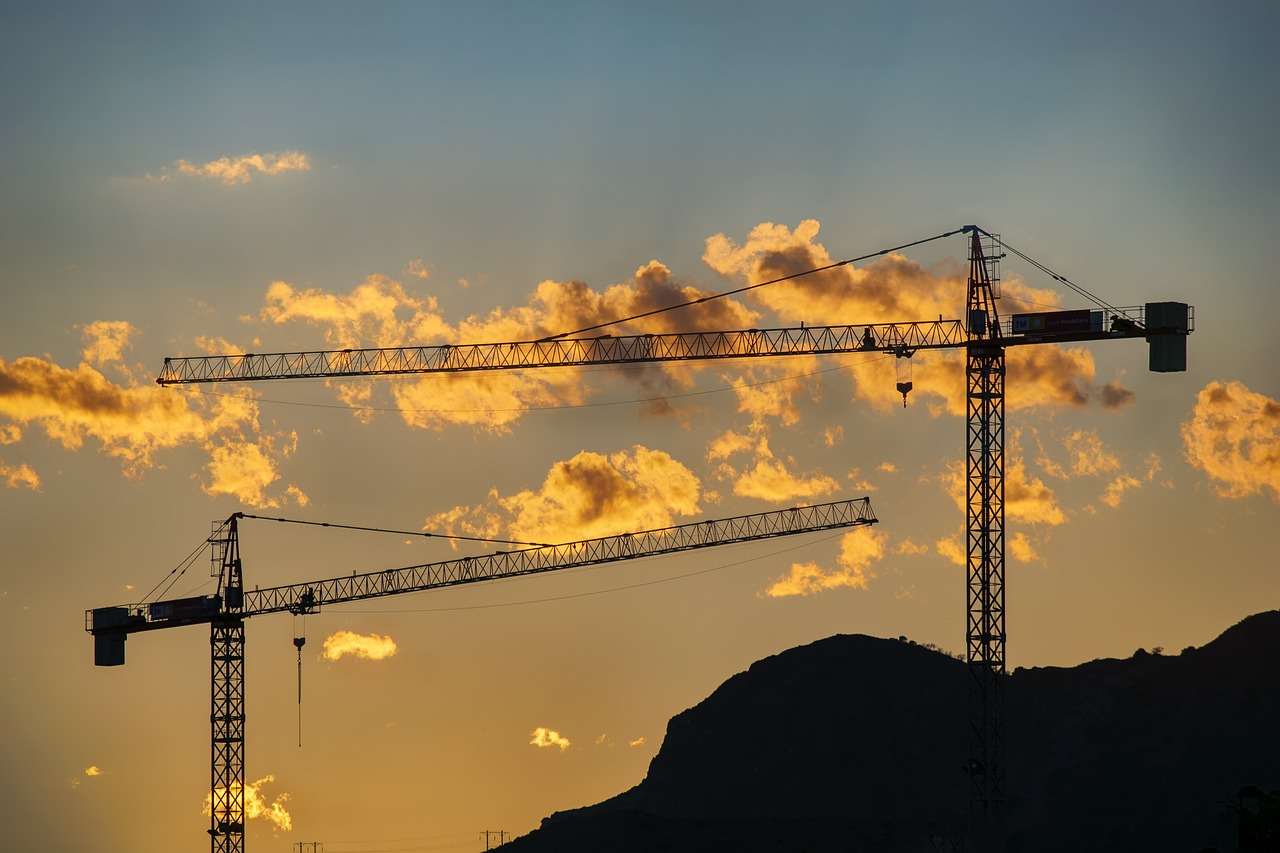Tower cranes are incredibly powerful pieces of construction machinery that are used for some of the most complex, demanding and specialized construction projects out there. Operating them is not an easy feat and requires both special training and a license. Still, before we even come to this, you first need to know how these tower cranes work so that you can utilize and use them properly and to their full potential. With that in mind and without further ado, here’s a brief rundown on all you need to know about tower cranes.
1. What are tower cranes used for?
The first question we have to answer here is the one of what are tower cranes actually used for and the answer is, lifting heavy objects to great heights. Here, we’re talking about items like large tools (acetylene torches, for instance), generators or objects made out of steel and concrete. Due to the fact that these cranes tower (no pun intended) hundreds of feet, they can lift these objects to great heights, thus saving hours and hours of futile effort.
2. What are its parts?
Three major parts of every tower crane are the base, the mast (this is what’s most commonly referred to as the tower), the working arm and the slewing unit (the motor used for swinging the working arm one way or another). As for the minor parts, you have the shorter horizontal machinery arm and the operator’s cab. Depending on the model, the type and the materials used this machinery may be able to lift bigger weights, which is why a knowledge of a single tower crane doesn’t necessarily translate to other, similar pieces of equipment.
3. Is buying a tower crane a good idea?
This particular issue is not one to be responded lightly. Namely, if you’re using the piece of equipment for more than 60 percent of the time, you should definitely buy it. On the other hand, here, there’s more to consider than just the price of the equipment. You also need someone skilled, trained and responsible to operate it. Here, responsibility is perhaps the biggest issue, seeing as how the consequences of mishandling a tower crane can be catastrophic.
For this reason alone, the majority of smaller companies and construction startups prefer to deal with agencies such as Universal Mobile Tower Hire and outsource this task altogether. This way, they get not only machinery but also the personnel necessary to operate it.
4. How much can it lift?
Earlier on, we went into depth to discuss the immense power of a tower crane, yet, its characteristics depend on many different factors. For a standard crane, maximum lifting power is at about 18 metric tons, provided that there’s a counterweight with up to 16.3 metric tons. As for the reach, it goes at about 70 meters (about 230 feet). Still, you need to be extra careful, as well as understand the phenomena such as maximum load and load moments in order not to overburden the crane.
5. How do they remain stable?
The next question that a lot of people ask about tower cranes is what keeps them stable. A lot of people would assume that such a thing can come from support wires, yet, tower cranes seldom have them. First of all, you need to understand that the largest of tower cranes have a concrete pad as a foundation. The dimensions of the pad usually depend on various factors, yet, for a standard crane, these dimensions are 10 by 10 by 1.3 meters (30 x 30 x 4 feet). Total weight of this pad goes as high as 182,000 kg (182 tons). When fastened with massive anchor bolts, these cranes become as stable and reliable as possible.
In conclusion
Overall, understanding how tower cranes work may not be a knowledge that will ever find practical use, from the standpoint of an average contractor. Nonetheless, understanding peculiarities about these structures may help you make the right choice of whether to purchase or hire. Moreover, different projects may require different cranes and it’s always for the best if you could compare them against one another. When looking for a way to create a competitive edge, knowledge is always a reliable partner.

